It’s been a wild year for Oni Press, but with 2022’s changes behind them, publisher Hunter Gorinson and editor-in-chief Sierra Hahn are ready to roll out their Class of 2024. They’ll be talking more about it today at New York Comic Con at 3:15:
Saturday, October 14
ONI PRESS: THE CLASS OF 2024
3:15 PM – 4:15 PM
Location: 406.2
For 25 years, Oni Press has redefined the comics mainstream from the underground up with hit series – like SCOTT PILGRIM, THE SIXTH GUN, TEA DRAGON SOCIETY, and hundreds more – that entertain, shock, and delight in equal measure. Now, Oni is taking its renegade spirit to all-new heights with must-read comics and graphic novels from some of the most talented creators in the medium today. Join President & Publisher Hunter Gorinson and Editor-in-Chief Sierra Hahn alongside mega-watt creators Melissa Flores (TOP SECRET), Matt Lesniewski (FACELESS AND THE FAMILY), Jarrett Melendez (CHEF’S KISS), Emmett Nahil (LET ME OUT), Jordan Thomas (THE MAN FROM MAYBE), and Zac Thompson (TOP SECRET) for a look ahead at Oni’s class of 2024!
But before that, I got to talk with them both via Zoom about where the company is going, its new ventures, and recognizing at last that comics are a visual medium.
Heidi MacDonald: Let’s talk about some of your exciting announcements that you have for New York Comic Con. So, the Nacelleverse, what is that? How did that come about?
Hunter Gorinson: So Brian Volk-Weiss, the CEO and founder of Nacelle Company, is someone who I met in my travels a couple of years ago. I was really impressed by his vision for what these properties can be. He feels the same way about toys that I think people like Sierra and myself feel about comics. I don’t think he’ll take any umbrage at my saying that he’s an obsessive toy collector. His office in Burbank is just covered in a small percentage of his massive and incredibly impressive toy collection. He’s had a huge amount of success doing things by leaning into that space, The Toys That Made Us being one of the primary examples. I can’t say too much, but they have a lot of really ambitious plans for the future and what they’re building. We saw some synergy there. I think there’s a hole in the comic book market for these kinds of books. And we’re blessed to have Melissa Flores, someone who Sierra and I have worked with previously at Boom Studios, kind of shepherding the comic book side of this. All I can promise is that there’ll be fun and really engaging books.
MacDonald: I actually interviewed Brian at New York Comic Con last year. So yeah, They seemed like quite an ambitious company with a lot going on.
Sierra Hahn: Just going off of what Hunter said, it feels like a series of properties and worlds and characters that we have a great opportunity to create a full spectrum line for in collaboration with Nacelle Company. And to bring that interesting off-kilter Oni sensibility to some of it. So that’s what’s really exciting about the opportunities, just creating these bigger worlds with some characters that have a nostalgia factor but I think can find their footing with a newer younger audience in tandem with that.
MacDonald: Since Nacelle is a toy company, it seems like there would be a lot of opportunities for cross-promotional packaging, merchandising, you know, get the comic with the toy. Is that a possibility for some of this stuff?
Gorinson: Yeah, I think one of the passions that Brian and myself share is a deep-seated devotion to market the hell out of stuff and find those synergies where they exist. And that’s 100% something that we’ve talked about. I can’t commit to anything right now as we speak. But watch this space. The company has a lot of very interesting capabilities – I think they also sell directly to direct market comics stores as a toy company so there’s a ton of potential there that I think we’ll begin to unpack in the months to come.
MacDonald: Turning to the mainline announcements, I did read your interview with Milton at ICv2, which was a great kind of intro [to what you two are doing]. So you’re kind of shifting to more periodicals. But there’s been so much talk about how many new periodical series there are, a lot of “Is the comic book doomed?” talk. What are the benefits of going back to periodicals in these kind of chaotic times.
Hahn: From my perspective, there’s an opportunity to continue to reach audiences. It’s always about where can we reach the most people, be it in comic stores or bookstores, libraries, digital, webcomics — they’re all an opportunity to create and grow and build an audience. I think we felt like there was an opportunity there, not only to grow the Oni business and Oni brand and create the kind of books that Hunter and I and the team are excited about. But giving the creators a wider reach is certainly a priority.
Gorinson: Oni publishes a lot of books. In a given year Oni has published anywhere between 50 and 70 books, and we’re planning to reasonably keep up that cadence in the future. When we say we’re going to publish more periodical products, we’re not doing The New 52 over here. At Oni, we’re talking about a handful of books in a given month. Oni had gone down to publishing, including licensed books, in total, five books a month would have been a really heavy month for Oni some months. Sometimes it was one, sometimes two. Comics culture is a living breathing thing, right? And it happens on a weekly and monthly cadence. And I firmly believe in my heart of hearts, the epicenter of comics culture happens in comic book stores. In order to participate fully in that culture, comics as a medium are sequential art, and as a medium isn’t limited specifically to the 22-page pamphlet format. It can be expressed in many different varieties. But it’s kind of like that’s the core presentation of the medium. So many people are driven into stores weekly, monthly, even if they have a pull list and they’re only coming in every six to eight weeks – or like I am now, unfortunately, coming in every couple of months. That’s the discoverability mechanism for so many of these stories, just from existing on the shelf next to the books that Dark Horse or Boom, or Image or Marvel or DC are putting out. You’re participating in the medium in a broader way. I think original graphic novels are a really powerful format. Oni excels in that format, and has done a lot of those over the years that are Great — Scott Pilgrim, Genderqueer, Tea Dragon Society….the list goes on. There’s so many great OGNs that have come out of Oni. But at the end of the day, those books take sometimes three to five times as long to create. They’re three to five times as hard to market. Sierra, feel free to disagree with me, I think they’re three to five times as hard to edit, potentially. So when we do those books, we need to put three to five times as much forethought and planning into doing them.
We still are very intentional about the comics we put out, don’t get me wrong. But it does allow us to move a lot quicker. The 20- to 32-page, self-covered comics format allows us to move a lot quicker and find a bigger breadth of audience faster. So I’m passionate about it. And we have a lot of people on the team who are passionate about it, but it’s only a single dimension of what we’re doing. We’re just kind of magnifying it again in the way that the company hasn’t been in five or six years.
MacDonald: I didn’t really think about how few periodicals you were putting out before you said that! So that’s very, very few. Just before I jumped on this call, I finished editing a 5,000-word interview with retailer Ron Hill. And he did say he would like publishers to be putting things out serialized and coming out on it regularly. So that’s a huge factor. But that said, you do have some pretty exciting new books that you announced. Sierra, I’d like to ask, you have a lot of new, very talented artists. As an editor, with so many new people coming in. What are you seeing out there from the new wave of creators?
Hahn: I think we’ve known each other going on 19 years, Heidi, and we’ve seen the evolution of drawing on boards and having pencils and inkers and this sort of multi-layered, multiple hands touching one piece of [art]. It continues to be artists doing their own work, doing their own cartooning, their own storytelling, with a lot more focus on “I’m creating my own thing, whole cloth” versus parsing out sort of these individual roles. Across the stories, I think there’s two sides of what I’m seeing, illustration-wise, which is the big brushy, inky, expressive linework. And then there’s also this call back to a nostalgic time, almost where you have these younger cartoonists looking back at the original foundational cartoonists, and drawing inspiration from that, bringing something new and kind of continuing to turn things on their head a little bit.
Again, it’s part of what Hunter and I continue to be interested in exploring. How do we put artists forward? How do we put their stories at the forefront of what we’re doing? And I think you see that with a book like Dwellings or Faceless and the Family that’s coming up. That expressive, expressive storytelling, expressive artwork, and something that maybe you’re not seeing on the shelves every single day. I think there’s been a lack of that. I think with graphic novels, you’ve got a really incredible spectrum of art styles and storytelling. I think in periodicals we’re going into this sort of glut of repetition and similar storytelling and similar palettes and things that feel really safe. We want to push ourselves to expand out of that, which can be a little risky because we can point to what’s been working, but how can we help create new ways of working and get those stories though?
MacDonald: You mentioned Faceless and the Family, which is by Matt Lesniewski. I see he’s really blown up on social media — what there is left of it. But yeah, he’s just incredible. Every time he’s putting stuff up, people go nuts, because it looks fresh, even though it’s super retro. His style is really what you’re just talking about, that mix of old school with a new modern twist. And I think audiences are responding to that. What’s got you excited about these new titles that you’ve just announced?
Gorinson: I think you’ll see that these are books that Sierra and I have been living with pretty much from the time that we started. And Sierra started in the first quarter of the year. What they’re an attempt to do is part of trying to sum up the mission of what Sierra and I have tried to define for the Oni team and where we think Oni stands in the industry. It’s trying to do counter-programming for the mainstream. In the same way that we’re trying to move into art/cartoonist-driven comics at this writer-dominated moment in the industry. It’s something that we can’t quite quantify. But we feel that there’s like a vacuum for that. And in the same way, each of these books, I will say, is distinctly weird or confrontational in some way. There are all kinds of left-of-center interpretations of tried and true genres, whether that’s more mystery, fantasy, science fiction, or what have you. But the execution is very different.
And one thing that we’ve also thought distinctly about each one of them is like, I’ve been calling them off-handedly “maximalist comics.” How can we tailor a format for each of these books that speaks best to the story that’s being told? Sierra and I talk about it with creators all the time, when we’re evaluating the projects that we want to move forward with at Oni: why is this a comic? At this point in our entertainment-saturated world, you could make a pitch, you could write a short story right now, you could write a spec screenplay, you could put together a proposal for a video game or podcast or whatever. But why is this story a comic? Even though we have an adaptation of a novel in here, by Barry Gifford, a pre-existing piece of media in and of itself. But in that case, Chris Condon came in with an absolutely killer vision for it that makes it a comic. So I guess all of that is to say we’re really preoccupied with making distinctive books that have a tangible value to them. When people pick them up, they feel like they’re getting a lot of story. It’s a lot of work to get your hands on a comic, you’ve got to drive to the store, maybe you pre-ordered it, you’ve got to talk to the person at the counter. There is no digital click culture for purchasing comics. Yes, you can buy them on Amazon —
MacDonald: Sort of.
Gorinson: You can buy them on Amazon with some degree of difficulty. But If you’re gonna go all the way to the comics store, sort through all this stuff, figuring out the books that you want to read, we want you to come back for issue two, and then we want you to come back for the next Oni book after that. So we’re putting a considerable amount of time and effort and intention into the books we’re putting forward, especially when we’re only, as we talked about, putting out a handful of them a month. We’re still only going to have somewhere between six and eight books a month.
MacDonald: I did ask you about being more art-forward in the line. That even being a thing sounds a bit counterintuitive, because… this is comics. But it really has become a very writer-driven medium, which is understandable as well. I’m not saying that there weren’t a lot of reasons for that. But can you just talk a little bit about that philosophy, of, kind of, bringing the art back, the evolution of that idea of being more art forward again?
Gorinson: If I did explain it, it’s to say exactly what you said. It’s the most obvious thing, Heidi! [general laughter] Art is the most obvious thing. I think it’s important to take a step back. Every five to 10 years we get into these media feeding frenzies in the industry. People wear it around their necks like an albatross. I’ve been in the room. I’ve heard the conversations. There’s so many conversations about how, yeah, this was a pretty good idea for a book but we can’t do it because if someone in Hollywood wants to option it, it’s going to be like $8 million per episode. So that’s too much. People have literally started to pull back on the artistic sensibility of how to execute stuff. And that’s bad. I believe that’s bad. I don’t want to speak for Sierra, but Sierra probably believes it’s a bad trend as well. It’s an artist-driven medium and has been since its inception. Chances are, you think back to whatever your Jungian archetype of the perfect comic is, or that first couple of books you encountered as a child or a teenager that made the pivotal impression on you. The thing that you remember is the art. So, it just seems like we’re in the business of taking creative risks and placing our bets where we think they will pay off. That being said, as the publisher of a comics company, I think the safest bet in the world is to invest in great artists.
Hahn: I think that’s very well articulated. And it’s something that, going back, drew me to this opportunity at Oni Press and the opportunity to work with Hunter, because we’re in alignment on that. I think we’ve both worked at places — and this isn’t to disparage them whatsoever, everyone has a different business model that works for them, that has worked for me in my career and helped me get to where I am today in this industry. But to feel like we can determine what the priority is, and draw in storytellers who really want to utilize the page in a big significant, meaningful way. That takes us back to why we fell in love with this medium and why this medium is so uniquely positioned for big, crazy, unique, unconventional storytelling.
MacDonald: Well, speaking of great comics, and great artists, you also announced this super deluxe Scott Pilgrim 20th anniversary edition, and a lot of times these super expensive collections feel like…okay. But in the case of Scott Pilgrim, 20 years on, with the cartoon coming out, it feels really right. This feels like something that I’d love to have on my shelf [if I had room.]. What is the trajectory of dealing with a classic like Scott Pilgrim? What does this bring to the Scott Pilgrim universe?
Hahn: We couldn’t have predicted that the Netflix anime and the 20th anniversary would coincide, but we’re gonna line up in this way. What’s been really exciting is collaborating directly with Bryan Lee O’Malley. And there’s so many different formats of Scott Pilgrim that we’re trying to unravel, to make sure that everybody has access to their preferred format: hardcover, softcover, black and white, color, digest size. All of that is going to remain, all of those books are going to be accessible and available to everyone. But what’s the thing that we would want that we would be nostalgic and excited for, that’s truly for the fans? It’s drawing inspiration from something, if you don’t mind me saying, like the Akira boxset, and how beautiful and stunning and rewarding that package is. How can we take inspiration from the success of something so impactful and meaningful as Akira, and apply it to something that we hold near and dear at Oni Press, and then continue to add in more things that make it a really unique standout item for the people who’ve been reading it and supporting it for those 20 years? There’s just a lot of opportunity for us to have fun. That’s the biggest thing, working with Brian and the designer, Patrick Crotty, who’s phenomenal. We’re having fun. We’re just like, how can we play? When people see that box, and we’re able to share what’s inside of it and all the different elements and thought we’ve put into it, they’re going to feel the fun and enthusiasm that we had put into it. There’s a lot of authenticity in the work that’s being done there.
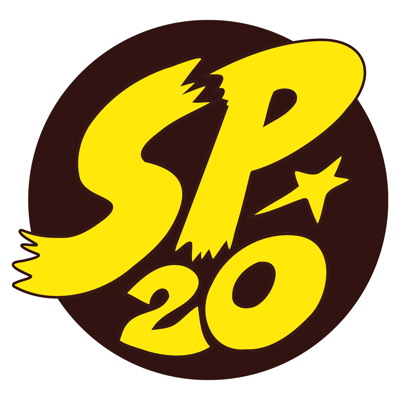
Gorinson: Yeah, again, I don’t want to call our shot too much. But I think the foundations of Oni are extremely strong. I think we have an incredible team. I think Sierra has built and refined the editorial team to an amazing degree. We have so many talented people in-house, from operations to production and administration and on down the line. That being said, what we have released publicly at this point is pretty much prologue to what we have planned for the future. So creative development on stuff, even all of the exceptionally talented people we work with, it takes time. We have activated on a lot of the ideas that we had when we first walked in the door in early 2023. I think at this point next year, we’re talking about some pretty crazy stuff. Our plan here with projects like Nacelle and the Oni 2024 lineup of books is intentional. Hopefully when we look back, in hindsight we’ll be able to see that this was kind of a ramping up of what we’ve been doing with Oni. Not in terms of volume, but in terms of presence, and in terms of impact that we hope to have. So we’re working towards a plan that’s pretty ambitious. I know it keeps Sierra and myself up late until the wee small hours of the night sometimes, especially during weeks like this coming up. But we are having fun. And we are going to have even more fun.


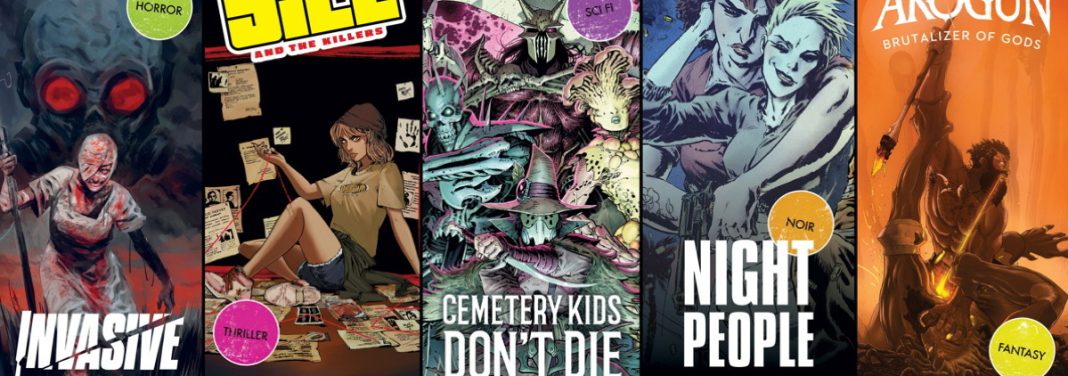
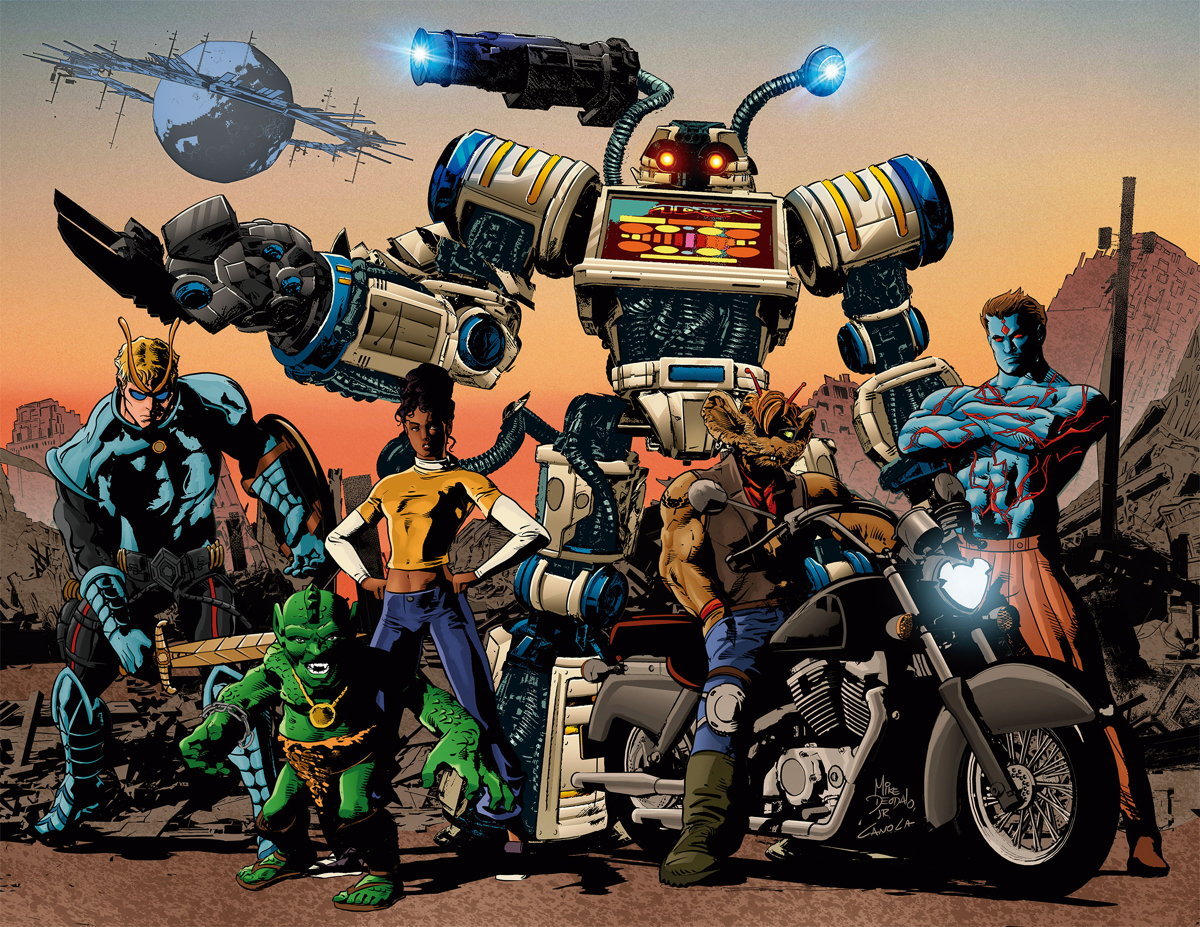
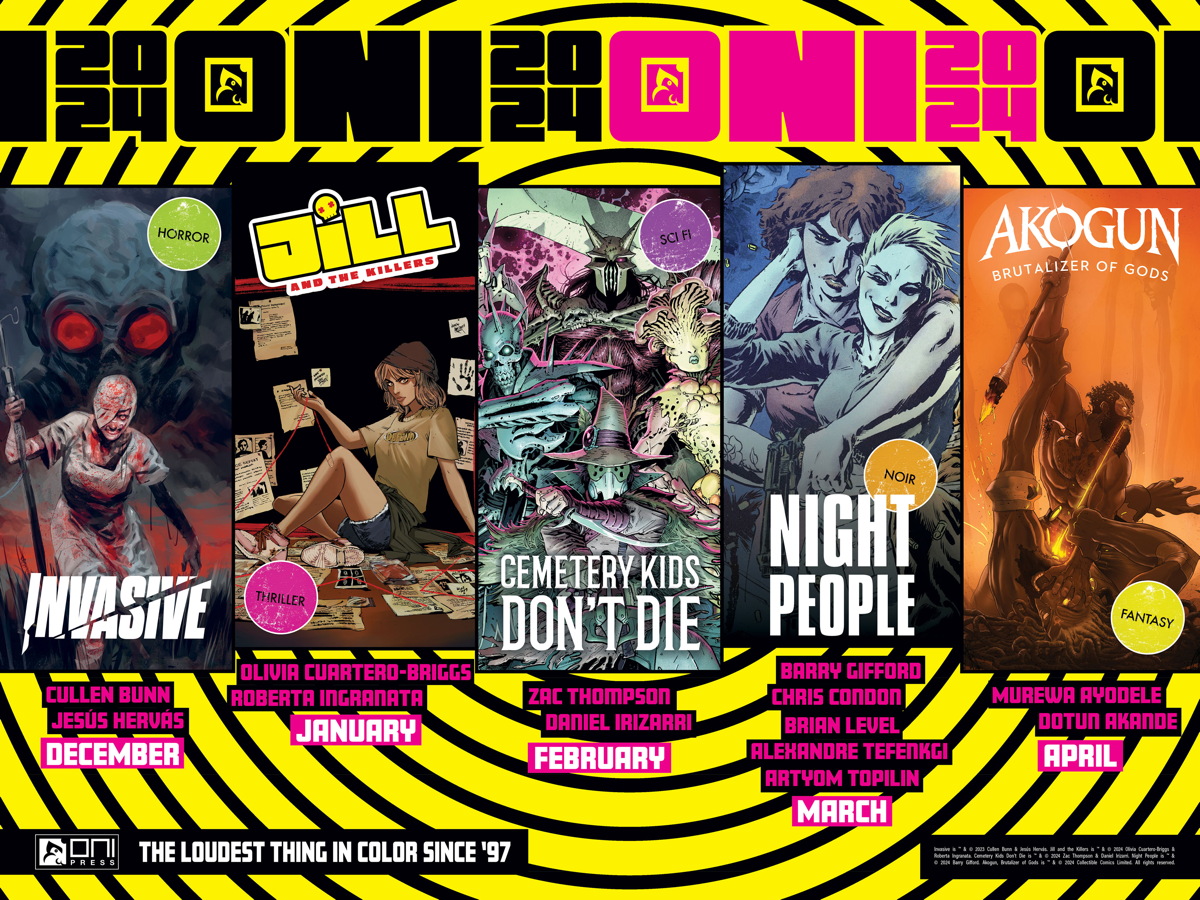
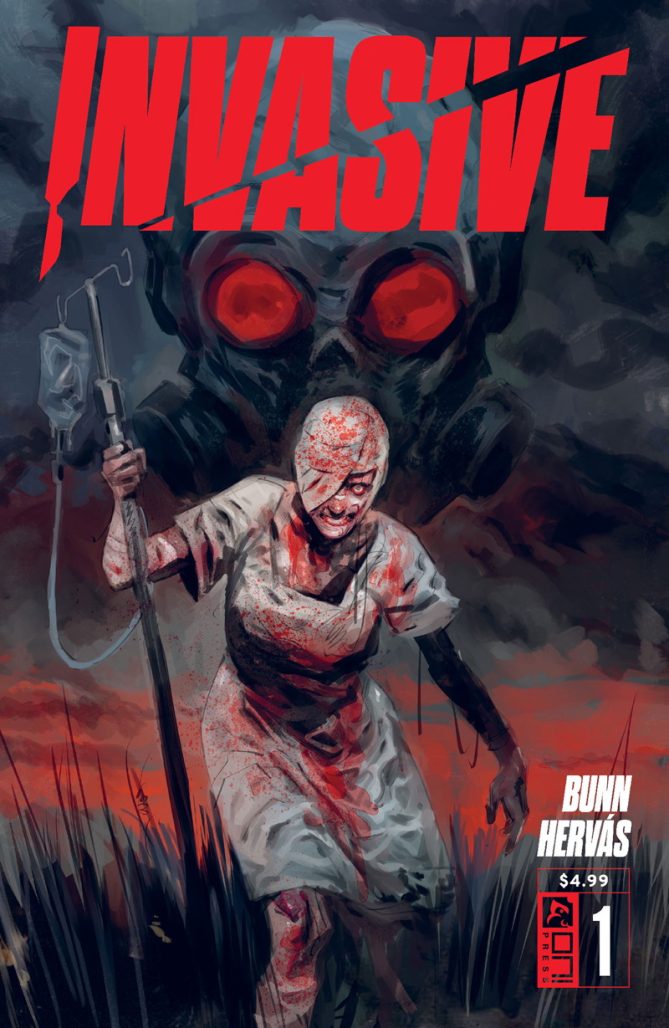
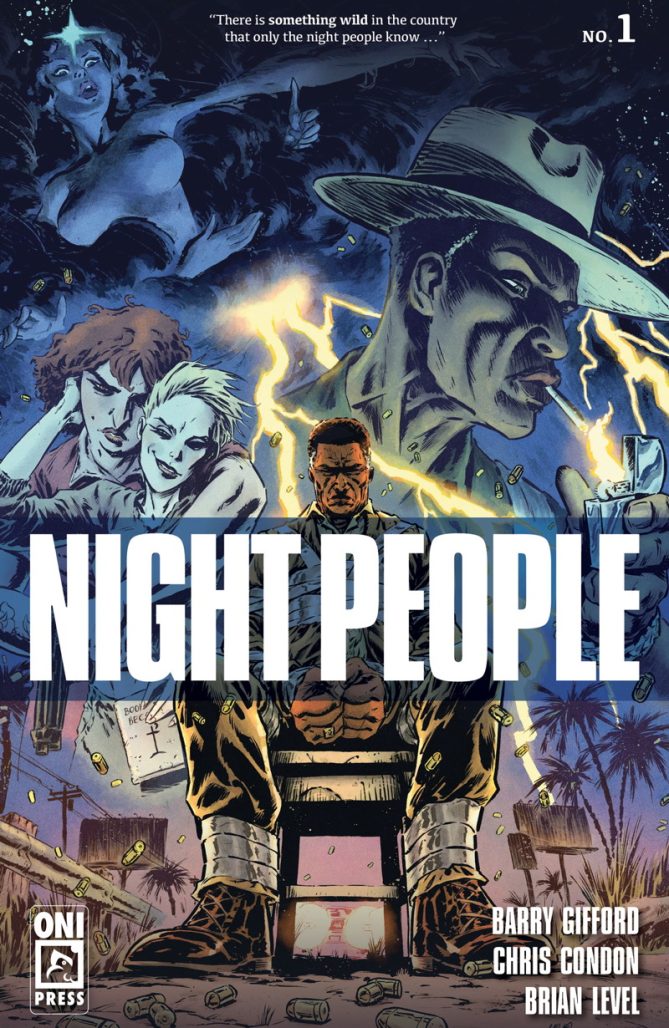
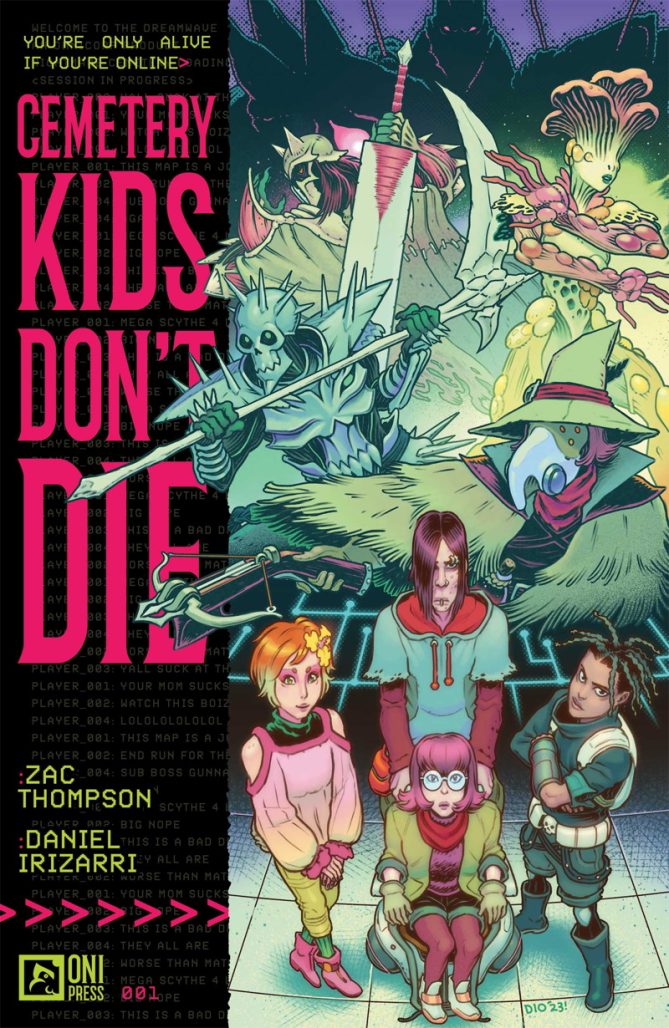
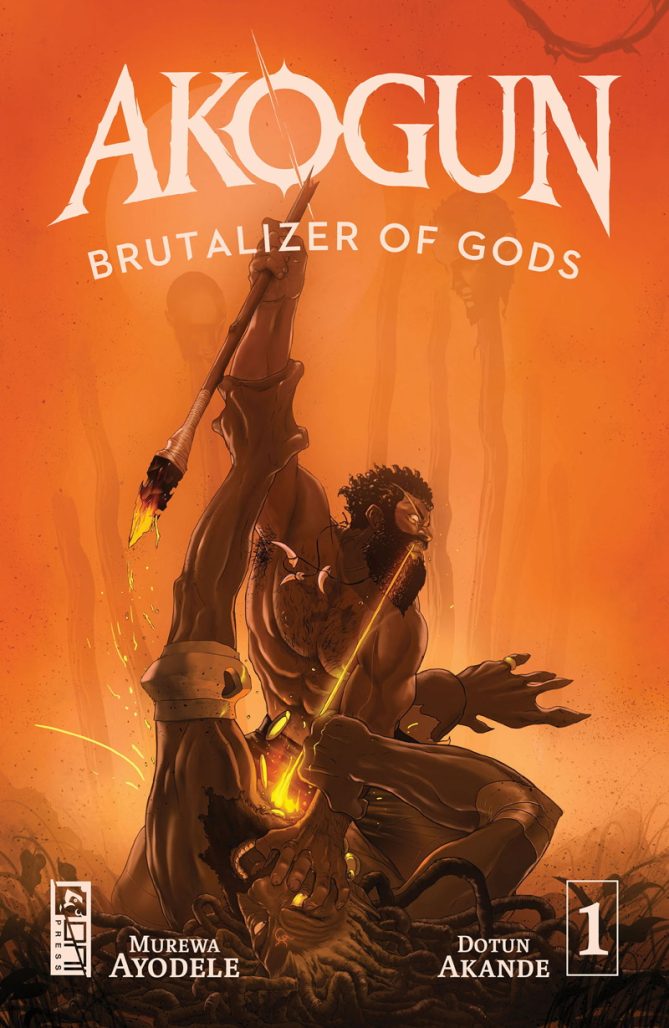
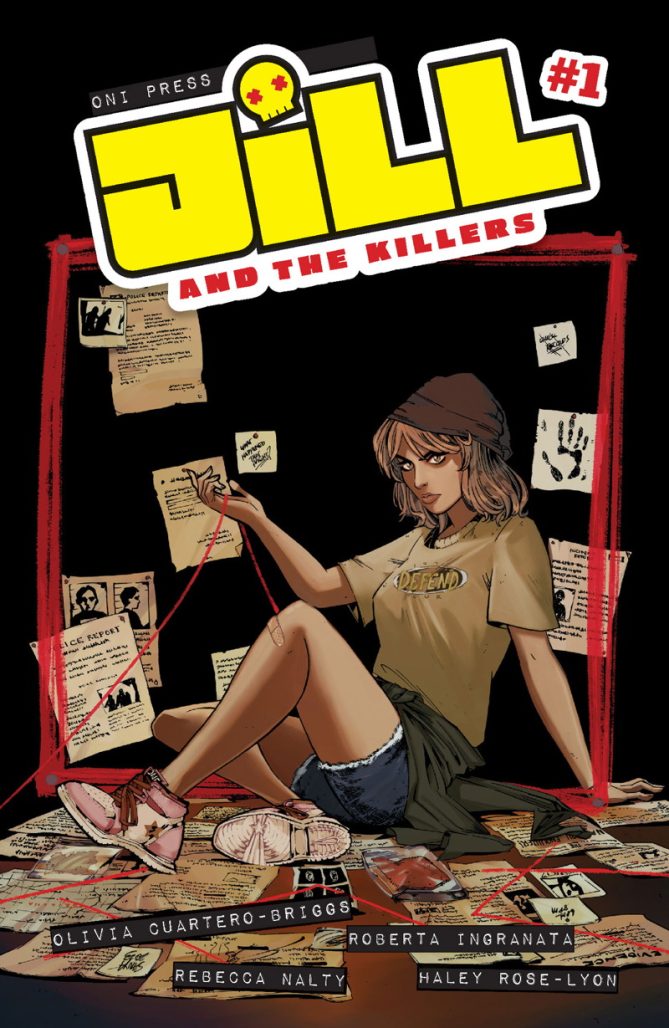
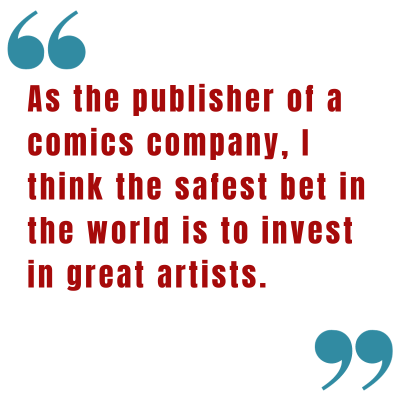
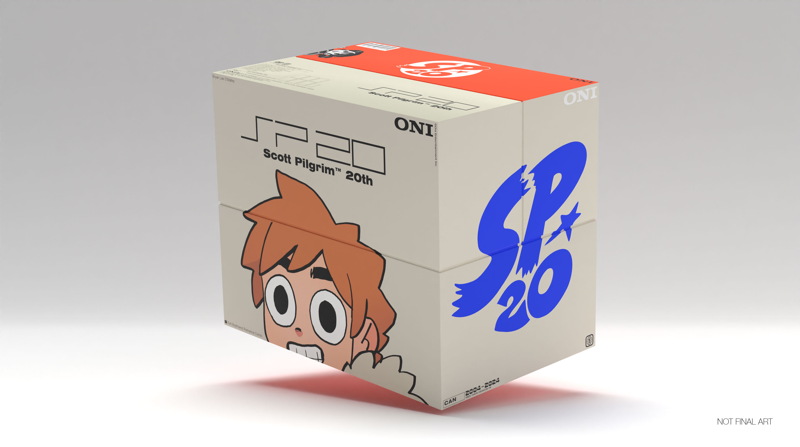
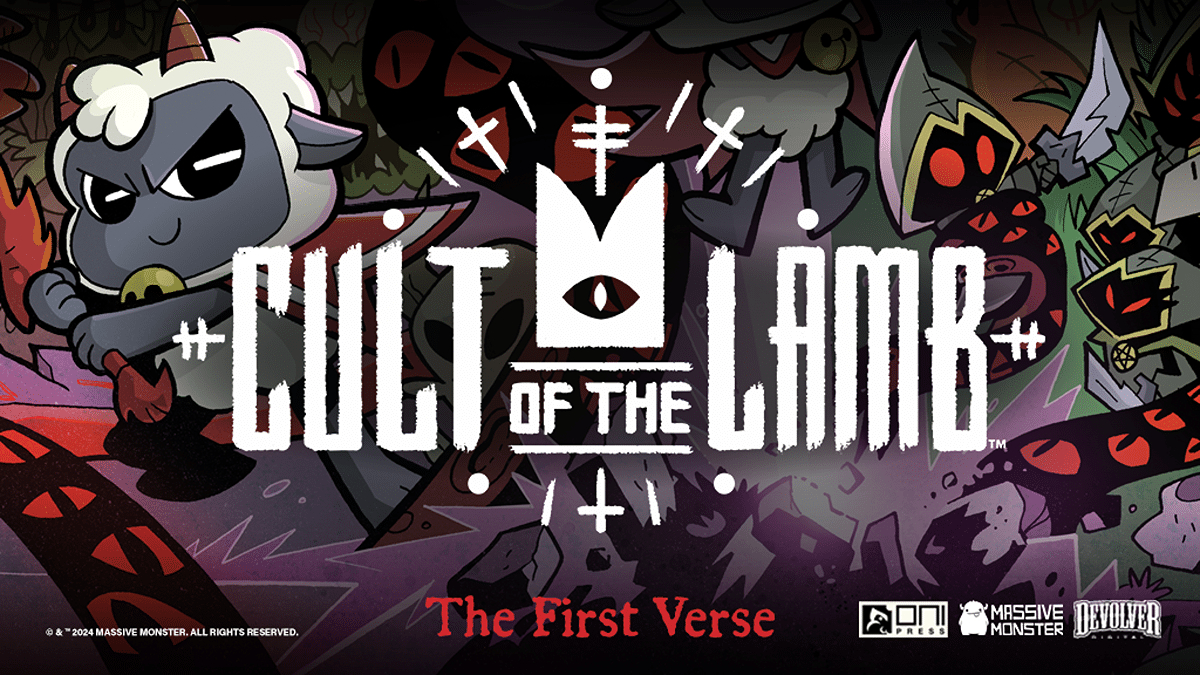
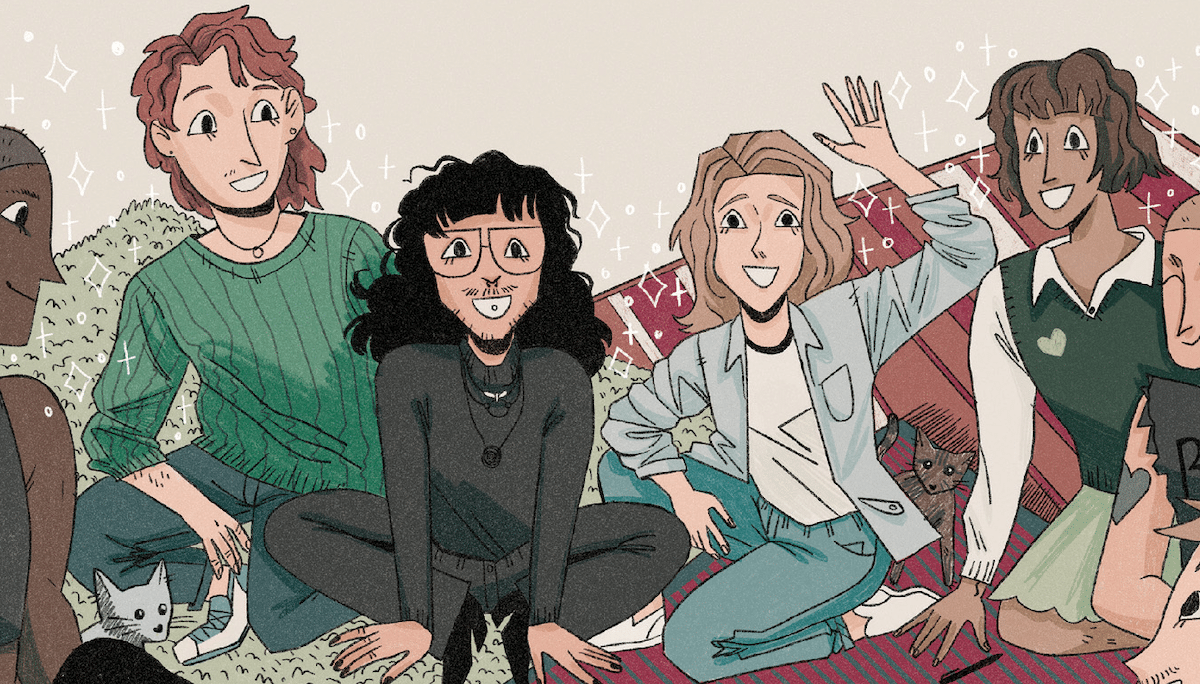
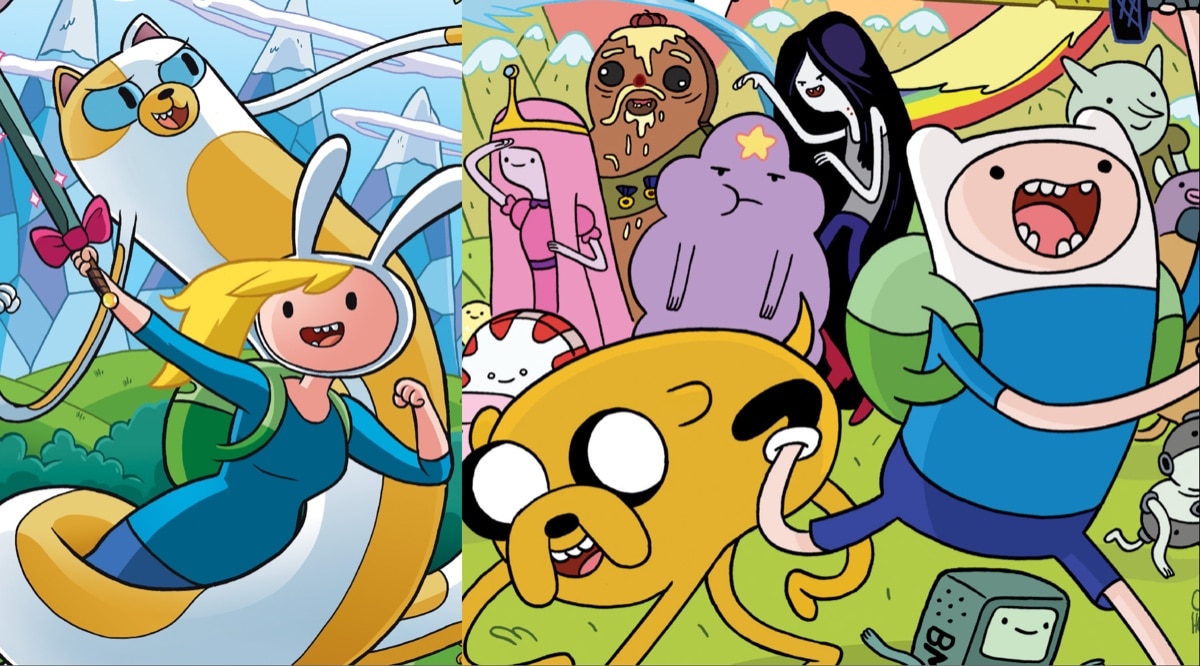




Comics that appeal to no one produced by lost cause SJW ‘editors”. I predict ONI bankruptcy within a year.
As usual Heidi is out of touch and pushing an agenda
sad
Comments are closed.